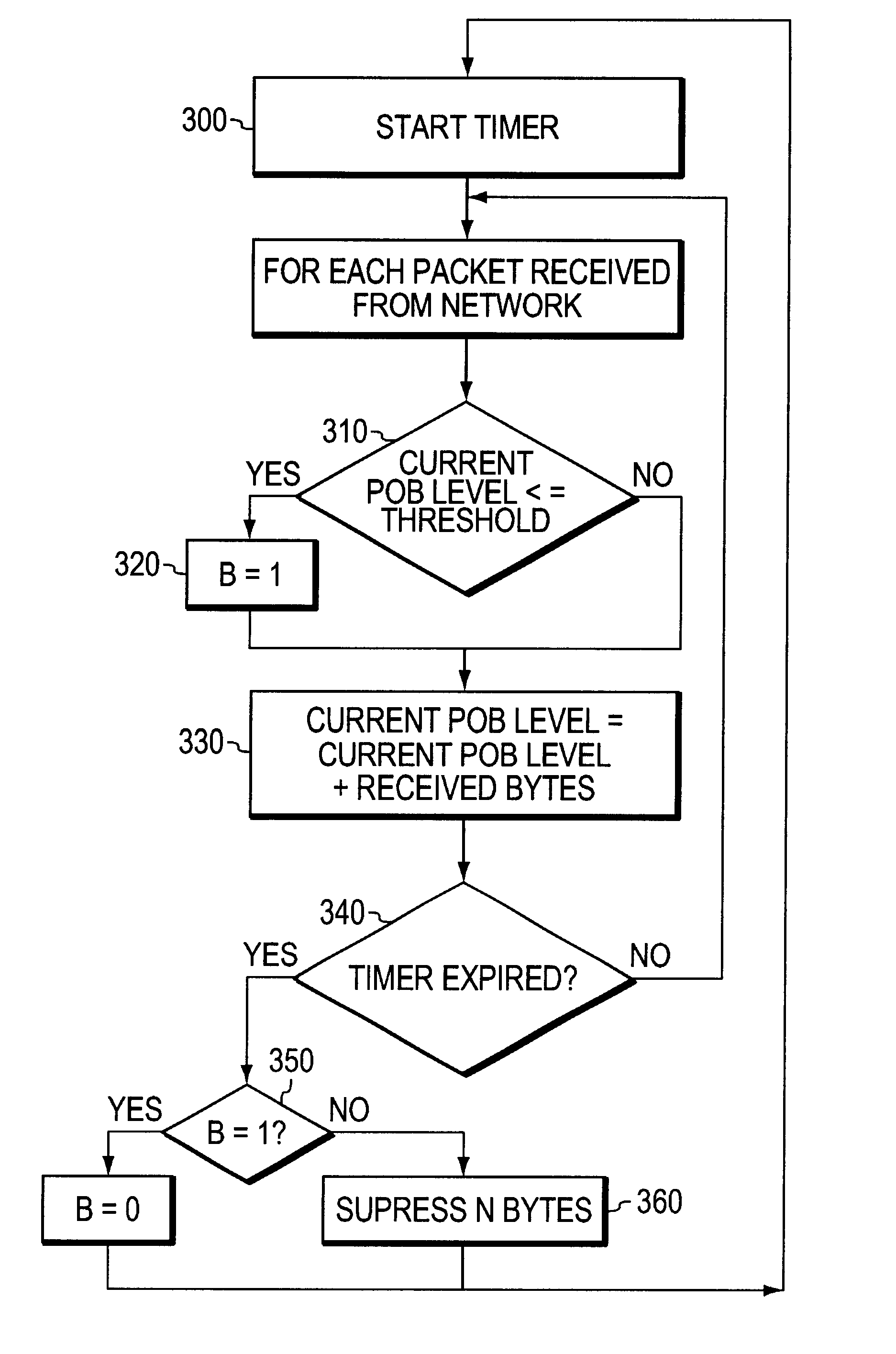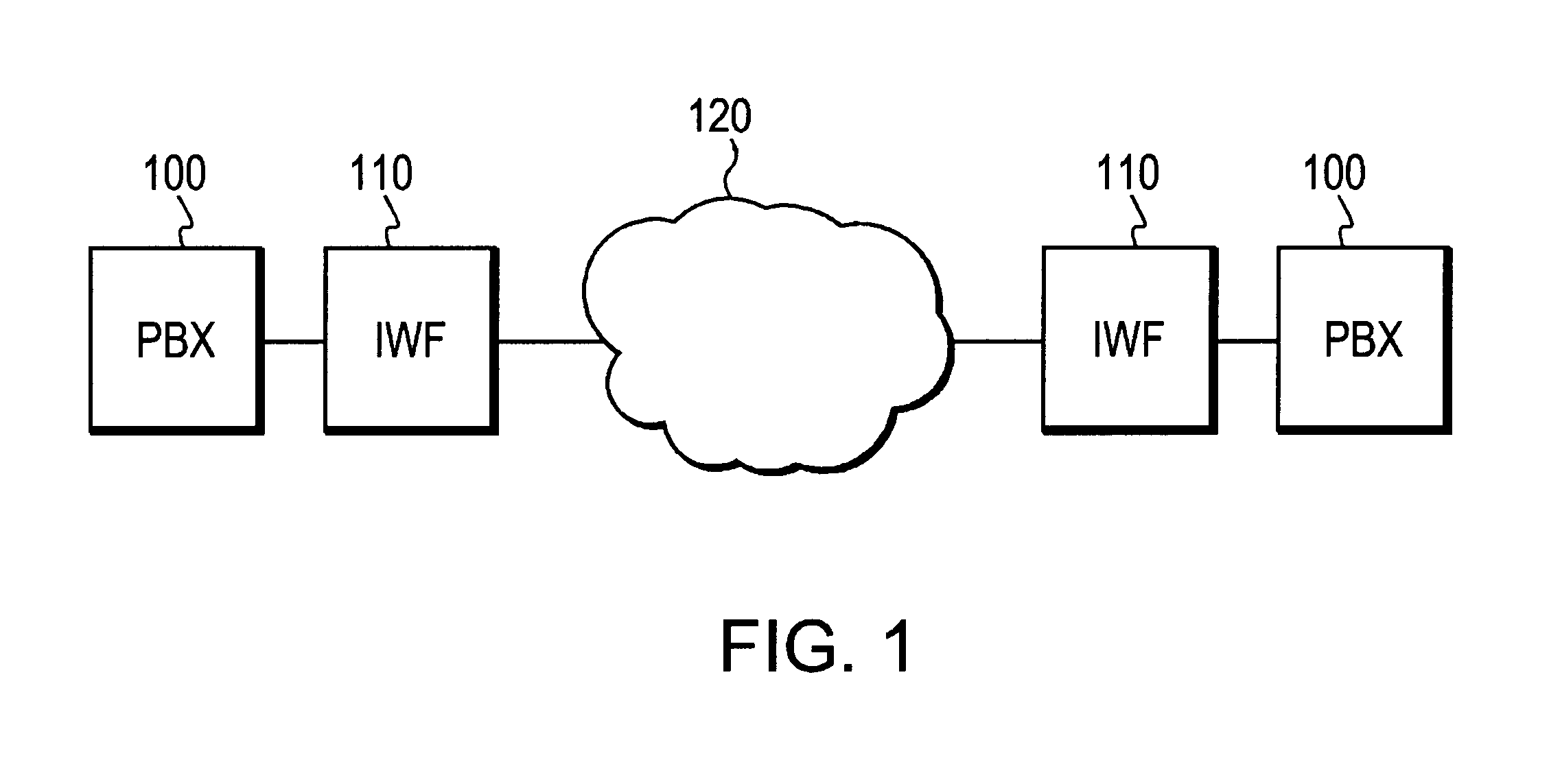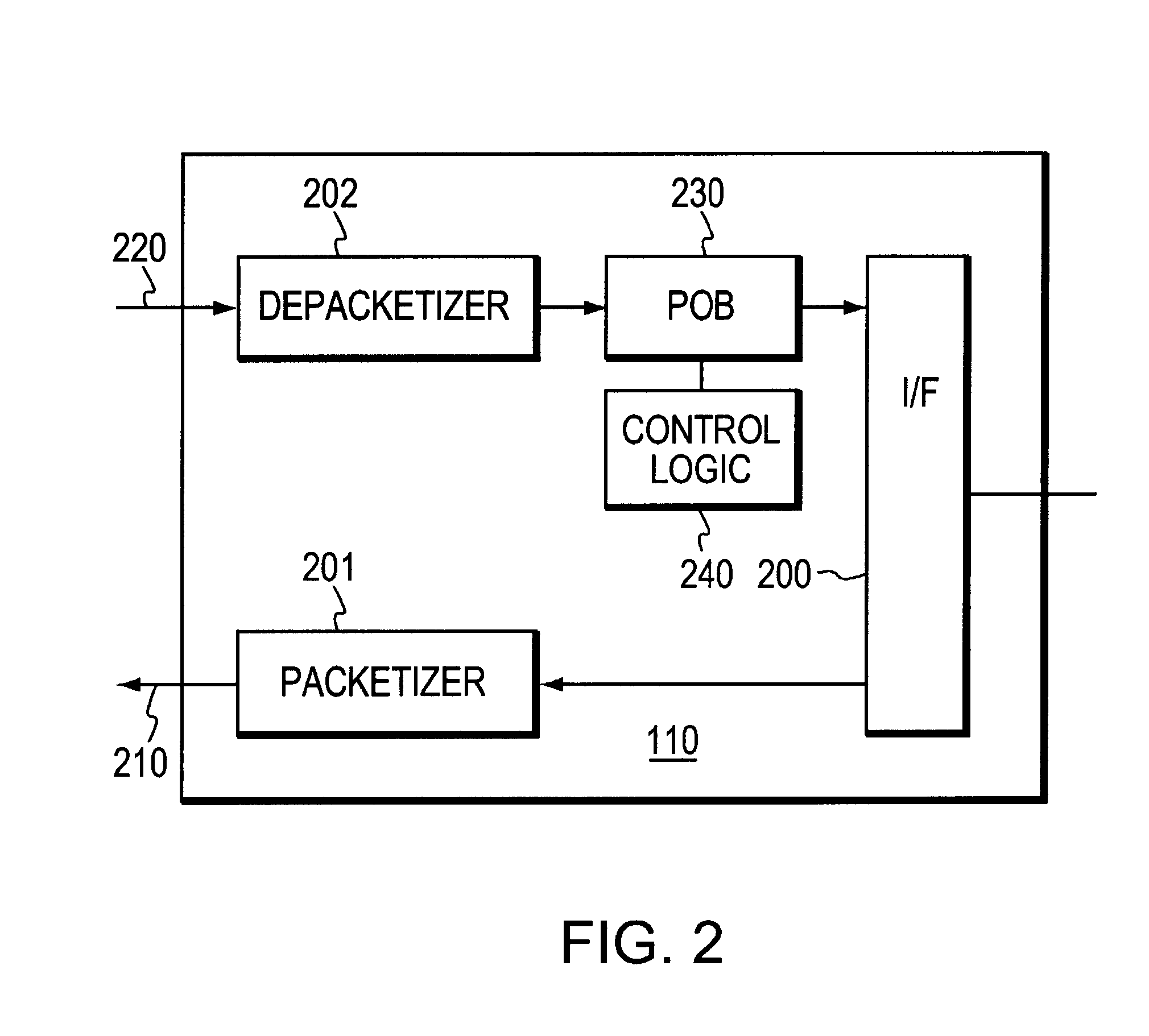Adaptive playout buffer and method for improved data communication
a playout buffer and buffer technology, applied in the field of data communication, can solve the problems of excessive overrun or underrun, clear undesirable for users, and overall end-to-end delay of the data stream being transmitted in the playout buffer, so as to reduce the average filling level of the playout buffer, reduce the impact of quality of connection, and reduce the average waiting time in the pob
- Summary
- Abstract
- Description
- Claims
- Application Information
AI Technical Summary
Benefits of technology
Problems solved by technology
Method used
Image
Examples
Embodiment Construction
[0029]FIG. 1 is a schematic diagram showing a data communications system in which two Private Branch Exchanges (PBX) 100 are interconnected via a CBR connection within an ATM data communications network 120. PBXs 100 are connected to the network at edge nodes 110. Edge nodes 110 provide an interworking function (IWF) to convert the Constant Bit Rate (CBR) traffic from the PBX into ATM cells for transmission over network 120.
[0030]While this embodiment has been developed for use in ATM networks, it will be appreciated that the techniques to be described would be equally applicable to other types of packet-based networks, such as those based on Frame Relay or the Internet Protocol (IP).
[0031]As shown in FIG. 2, edge nodes 110 comprise an interface 200 for interfacing with the PBX nodes 100, Playout Buffer (POB) 230 and associated control logic 240. Node 110 includes packetizer 201 which places data to be transmitted from PBX 1000 into data packets which are then sent over ATM network ...
PUM
 Login to View More
Login to View More Abstract
Description
Claims
Application Information
 Login to View More
Login to View More - R&D
- Intellectual Property
- Life Sciences
- Materials
- Tech Scout
- Unparalleled Data Quality
- Higher Quality Content
- 60% Fewer Hallucinations
Browse by: Latest US Patents, China's latest patents, Technical Efficacy Thesaurus, Application Domain, Technology Topic, Popular Technical Reports.
© 2025 PatSnap. All rights reserved.Legal|Privacy policy|Modern Slavery Act Transparency Statement|Sitemap|About US| Contact US: help@patsnap.com



